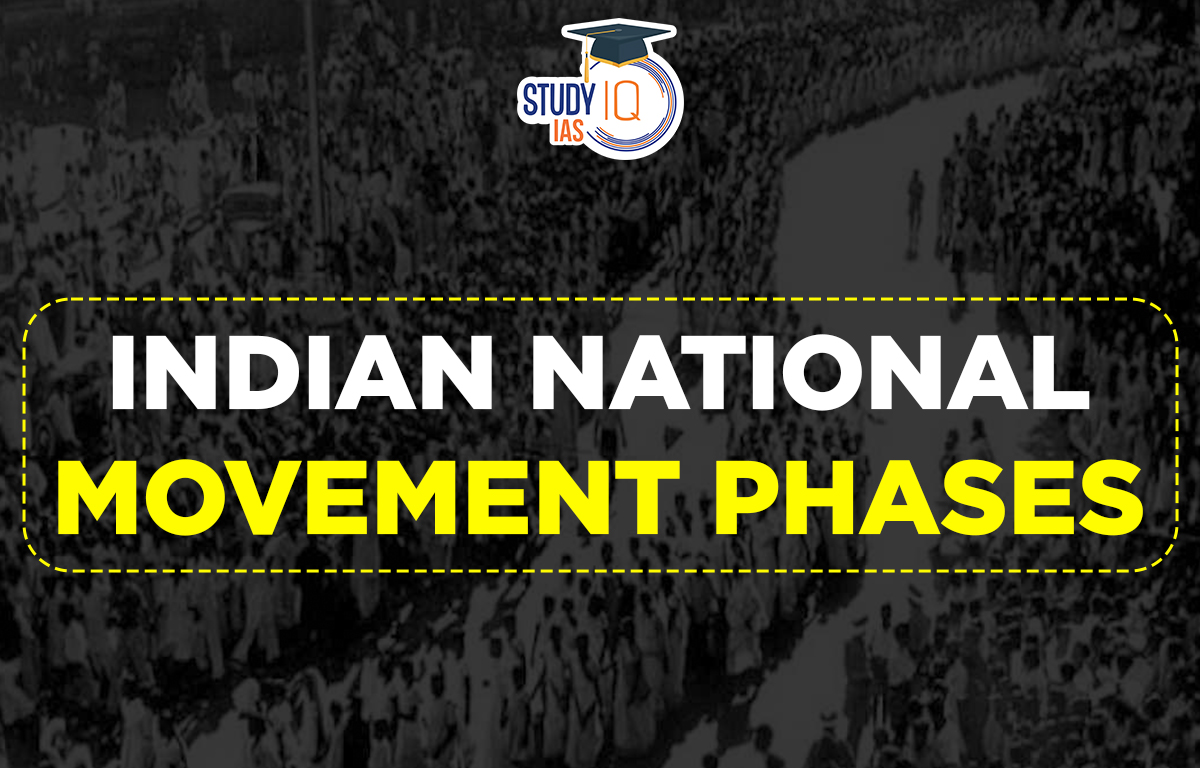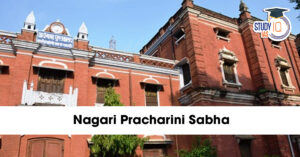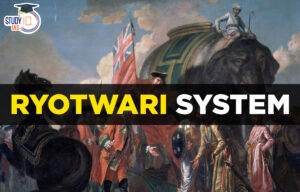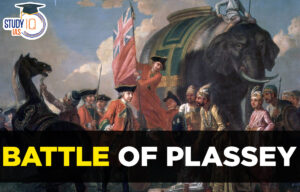Table of Contents
Indian National Movement helped to unite disparate people and social groups into one nation, shaping an important period of Indian history. Awareness began to emerge with the growth of English education in a few important urban areas, including Calcutta, Madras, and Bombay, in the late 19th century. Intellectuals at the time opposed the injustices and deceit of the previous societal structure. After focusing on the concept of British rule and its impact on India, the informed Indians became progressively more critical of British policies in India. This article has complete details related to Indian National Movement for UPSC Exam Preparations.
Read More: Socio-Religious Reform Movement
List of 14 National Movements in India – From 1885 to 1947
- 1857 – Revolt of 1857; Sepoy Mutiny
- 1885 – Foundation Of Indian National Congress
- 1905 – Swadeshi Movement
- 1906 – Muslim League Founded
- 1914 – Gadar Party Movement
- 1916-1918 – Home Rule Movement
- 1917 – Champaran Satyagraha
- 1917 – Kheda Satyagraha
- 1918 – Ahmedabad Mill Strike
- 1919 – Rowlatt Satyagraha
- 1920 – Khilafat And Non-Cooperation Movement
- 1930 – Civil Disobedience Movement
- 1940 – Individual Satyagraha
- 1942 – Quit India Movement
Indian National Movement Phases
Based on the time period, the leadership, the objectives, the techniques used, and the social base, the National Movement during the years 1885 to 1947 can be divided into the following three phases.
| Indian National Movement Phases | |||||
| Phase | Period | Leadership | Goal | Methods adopted | Social Base |
| Moderate Phase | 1885-1905 | Moderates/Early Nationalists | Dominion Status | Constitutional Methods-Petitions, Prayers, Plead | Educated Urban Upper Classes |
| Extremist/Militant Nationalist Phase | 1905-1920 | Extremists/Militant Nationalists | Swaraj/Self-Government | Passive Resistance & Swadeshi | All Urban Classes |
| Gandhian Phase | 1920-1947 | Mahatma Gandhi | Sampurna Swaraj/Complete Independence | Satyagraha | All Urban and Rural Classes(including grass-root level population and masses) |
Read More: Reformist Movements & Revivalist Movements
List of National movements in India from 1857 to 1947
This List represents all timeline of Indian freedom struggle from 1857 to 1947. Read the List to know all about the Indian national movement:
| Indian National Movements Phases From 1857 to 1947 | |
| Year | Indian National Movement |
| 1857 | The Revolt of 1857 or Sepoy Mutiny of 1857 started in Meerut and expanded to Delhi, Agra, Kanpur, and Lucknow. |
| 1905-1911 | Swadeshi Movement: Lord Curzon’s Partition of Bengal |
| 1914-1917 | Ghadar Movement resulted in the Komagata Maru incident |
| 1916-1918 | Home Rule Movement launched by Bal Gangadhar Tilak and Annie Besant |
| 1917 | Champaran Satyagraha resulted in the First non-violent protest in India by Mahatma Gandhi |
| 1919 | Rowlatt Satyagraha |
| 1920 | Khilafat and Non-cooperation Movement: It was the first Mass Movement led by Gandhi. |
| 1930 | Civil Disobedience Movement resulted in to break of the Salt law. |
| 1940 | Individual Satyagraha resulted against the August Offer, 1940. |
| 1942 | Quit India Movement where Gandhi launched his third major movement against British rule. |
Read More: Young Bengal Movement
Indian National Movement Moderate Phase (1885-1905)
W.C. Banerjee, Surendra Nath Banerjee, Dhadabhai Naoroji, Feroze Shah Mehta, Gopal Krishna Gokhale, Pandit Madan Mohan Malaviya, Badiruddin Tyabji, and Judge Ranade were among the prominent figures during the first phase (moderate phase) of the National Movement. They were referred to as moderates because they used legal and peaceful means to fulfil their requests. The moderates’ requests included things like:
- Reform and expansion of legislative committees.
- Greater chances for Indians in higher positions thanks to the simultaneous administration of the ICS test in England and India.
- The division of the judicial and administrative branches.
- Greater authority for municipal governments.
- A cut in military expenditures.
freedom of association, freedom of opinion, and freedom of expression The Moderates were loyal to the British and had complete confidence in them. The Moderates presented their requests through petitions, resolutions, meetings, leaflets and pamphlets, memoranda, and representatives. Only the educated classes were allowed to participate in their political actions. Their goal was to gradually achieve political freedom and self-government. The Indian Council Act of 1892 expanded the legislative councils, which was the only request from Congress that the British government approved.
Read More: Reform Movements in Southern India
Important Moderate Personalities
- Dhadabhai Naoroji was referred to as India’s “Grand Old Man.” In England, he is considered as India’s unofficial ambassador. The first Asian to hold a seat in the British House of Commons, he made history.
- Gandhi looked up to Gopal Krishna Gokhale as his political mentor. He established the Servants of India Society in 1905 to teach Indians how to spend their lives in service of their nation.
- The Indian Burke was the moniker given to Surendranath Banerjee. In order to advocate for legislative reforms, he established the Indian Association in 1876. He had called for the 1883 convocation of the Indian National Conference, which in 1886 united with the Indian National Congress.
- The Hindu and Swadesamitran were established by G. Subramanya Aiyar.
Read More: Self-Respect Movement
Indian National Movement Extremist Phase (1905-1916)
The Indian National Movement went through an extreme era from 1905 to 1916. Extremists served as the phase’s leader. Extremists or aggressive patriots thought that success could be attained by using risky tactics. Lala Lajpat Rai, Bal Gangadhar Tilak, Bipin Chandra Pal, and Aurobindo Ghosh were significant radical figures.
| Indian National Movement From 1905-1918 | |
| Surat Split | First World War |
| Partition of Bengal | Swadeshi Movement |
| Muslim League | Morley-Minto Reforms 1909 |
| Ghadar Movement | Komagata Maru Incident |
| Lucknow Pact | Home Rule Movement |
Also, Check Freedom Fighter of India
Indian National Movement UPSC
For many government exams, the Indian National Movement is a very pertinent subject in Indian history, and understanding the types of questions that might be asked in the test is the only way to fully comprehend the importance of this topic. Candidates should therefore practice enough queries on the subject. Peasant movements were a part of societal struggles against British atrocities during the British Colonial Period in the 18th and 19th centuries. This article has all the details related to Indian National Movement for UPSC Preparations.
Read More: Singh Sabha Movement


 Nagari Pracharini Sabha Revival: Backgro...
Nagari Pracharini Sabha Revival: Backgro...
 Ryotwari System in India, Features, Impa...
Ryotwari System in India, Features, Impa...
 Battle of Plassey, History, Causes, Impa...
Battle of Plassey, History, Causes, Impa...





















